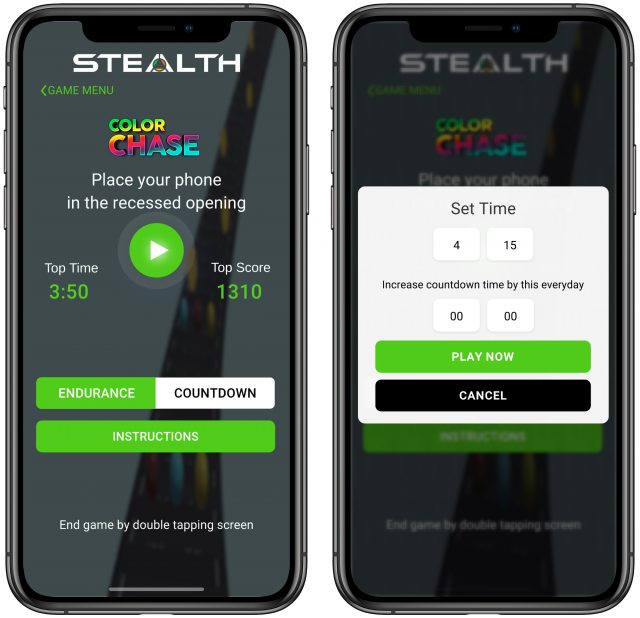We all have interests outside tech—my main one is competitive running—and every now and then I find an excuse to check out some piece of tech gear while working on my fitness. My latest effort along these lines is the Stealth Core Trainer, which promises to give me a “lean, strong core” while playing games on my iPhone.
You might ask why, if I’m a runner, I’m worried about core work. We runners have long been told that a strong core is essential for avoiding injuries and running well. I don’t disagree with this, though a decently strong core did nothing to prevent my most recent 18-month bout of plantar heel pain. I also found myself nodding when I read “Local Man Starting to Think His Core Will Never Be Strong Enough for Runner’s World” on the satire site Dumb Runner (be sure to check out the motivational posters too).
Of course, in today’s world of coronavirus-related restrictions, the other reason to check out the Stealth is that going to a gym or exercise class is, at least in my COVID-19 threat model, right out. Buy one and you can get plenty of core exercise in the safety of your living room.
What’s Stealth Got to Do with It?
It’s entirely unclear where the “stealth” part of the name comes from, given that the Stealth is a triangular plastic platform mounted atop a conical base. It may be small compared to gym equipment, but at about 22 inches (56 cm) from its chopped-off tip to base and a similar 22 inches of width at the base, it takes up plenty of space in the corner of a room. Its bright yellow color would camouflage it only in a kindergarten classroom. The plastic is thick and sturdy, and it’s not breaking down in any way after 50+ sessions.
A T-shaped depression at the top of the triangle holds any smartphone—even Apple’s largest models—in either portrait or landscape orientation, and a pair of pads make it comfortable to rest your forearms on the Stealth while in a plank position.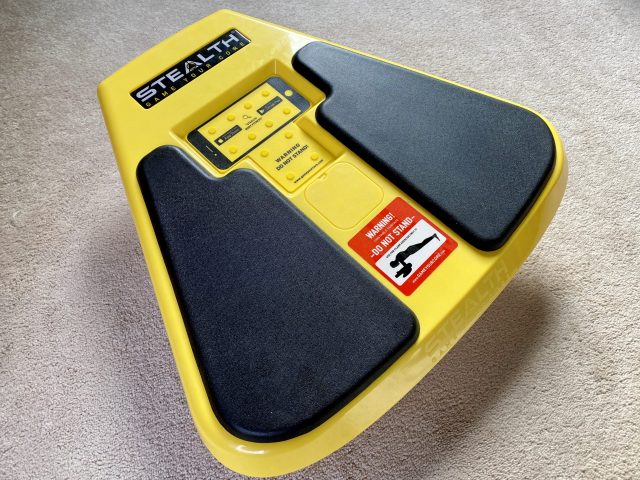
As anyone who has done core workouts can attest, a plank position is hard to maintain for long. In essence, you hold yourself up with your forearms and keep the rest of your body in a straight line. If a full plank from your toes is too hard, you can make it easier by putting your knees down.
The plank has been around since the early 1900s but has grown in popularity this century. According to the International Sports Science Association, planks “incorporate and activate the abdominal and trunk muscles, support proper posture by helping to safeguard an erect spinal position, and encourage proper alignment of the spine.” Forget sit-ups; try planks instead.
The Stealth goes beyond a static plank in three ways:
- Its platform tilts and rotates on a ball joint, enabling the user to lean in every direction and twist left and right.
- The free Stealth Fitness app (iOS and Android) provides a large selection of simple video games that keep you engaged while you exercise.
- For those who are encouraged by competition or community, Stealth offers a variety of statistics, leaderboards, and challenges. It also links to a private Facebook group.
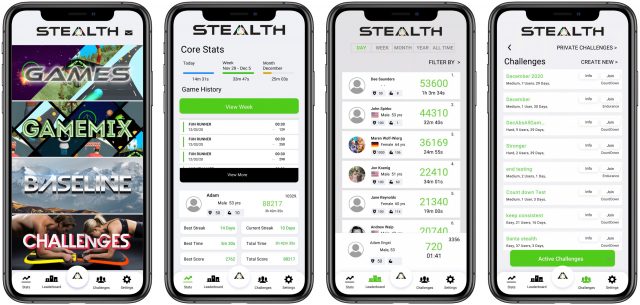
Having trouble visualizing what it’s like to use it? Check out my 1-minute video of a real-world Stealth session.
Getting Strong, the Stealthy Way
I’ve been using the Stealth most mornings for a few months now because I wanted to see if it would pass three key tests. Would it help me improve my strength and fitness? Would I find it both effective enough and enjoyable enough to keep using it? And would it cause other injuries?
The most quantifiable way that I can attest to the Stealth’s efficacy is that I can play the games longer. When I started, I could manage no more than 2–3 minutes, but in the last week or so, I’ve managed to put in several sessions that exceeded 5 minutes. (If that doesn’t seem like much, let’s see how long you last, buster.)
As an athlete, I’m also fairly aware of my physical condition. There’s no way to quantify this, but in general, I feel stronger and more confident while performing core-focused movements. Bending, reaching, twisting—they’re all a little easier than they were before.
I can’t say that playing games on the Stealth is something I look forward to every day, but it’s both sufficiently fun and challenging that I’ve kept with it. Given that the only way you can interact with the games is by tilting and rotating, they have to be simple. I’ve found some quite enjoyable; others less so. They include:
- Galaxy Adventure: Complete several different screens of tasks, such as touching a series of planets in a particular order and then holding a target over a larger one. It’s fun enough but lacks variety.

- Speed Gliding: Pilot a glider through a valley, avoiding trees, birds, and balloons, while flying through rings and catching powerups. If you get caught up on something, twist back and forth to escape. I found it too slow and imprecise.
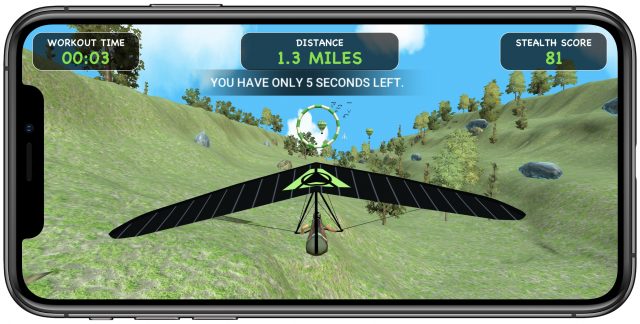
- Color Chase: You’re a colored ball rolling down an infinite roller coaster track, running into balls of the same color and collecting coins while avoiding balls of other colors and going through hoops. It’s quite variable and moves quickly enough to remain engaging. It’s one of my favorites.
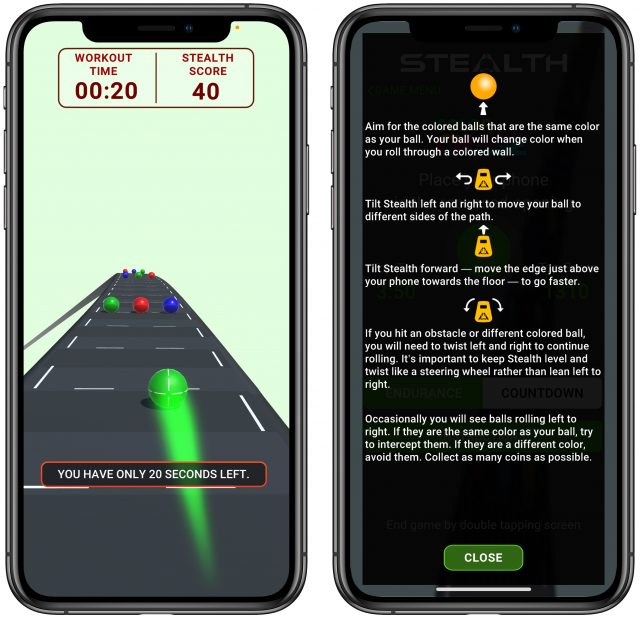
- Space Escape: Bounce a spring-loaded robot off rock platforms in space, capturing gems as you move up an infinite screen. As with Color Chase, it plays smoothly and is simultaneously easy to play and challenging to play well. Another favorite.
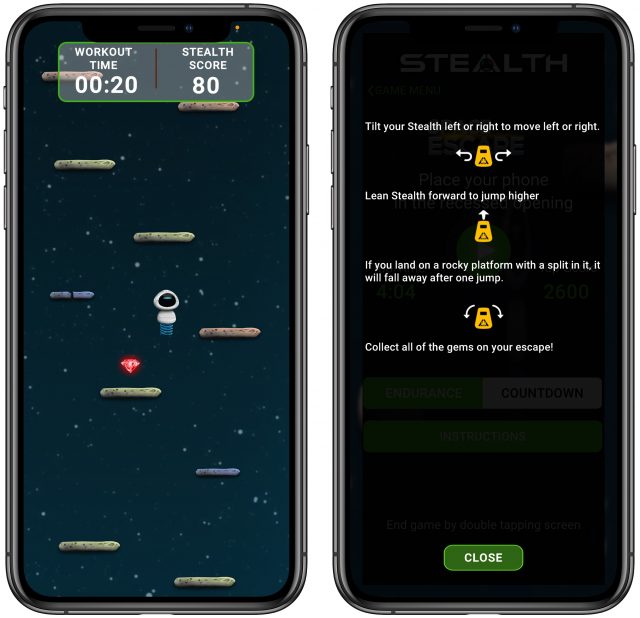
- MotorCore: Stealth Body Fitness added this motorcycle simulation recently, and it has the best graphics of any of the games. I dislike it, though, since it’s too fast and twitchy, and I frequently go off the road or run into other vehicles, forcing me to twist back and forth to recover. Maybe I’ll play it more as I get stronger.
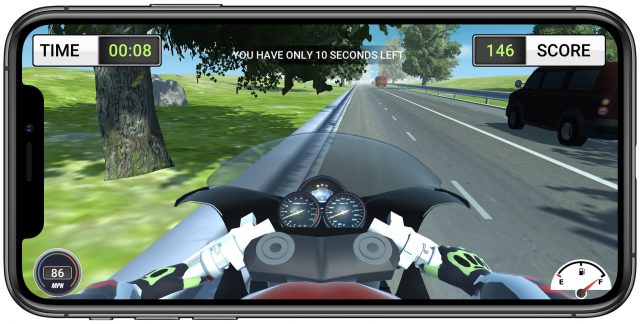
- Sprint Stick: Much like Color Chase, you run down a path, pushing a cart that collects coins and colored tiles, but only those that match the color of the gate you’ve most recently passed. At the end, you twist back and forth to throw down your tiles; the more you’ve finished with, the higher your point multiplier. I enjoy it.
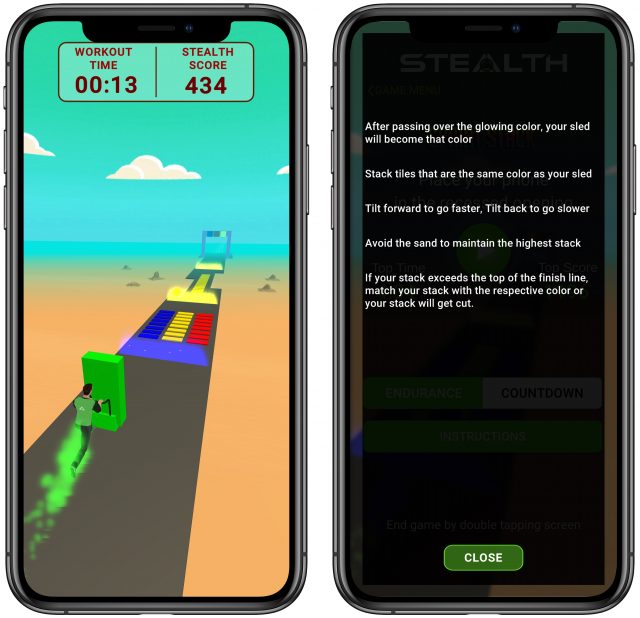
- Stealth Invaders: Space Invaders, but in a variant where your ship fires at a constant rate and all you can do is move back and forth. It’s a little frustrating, especially since you can’t control the side-to-side motion all that well.
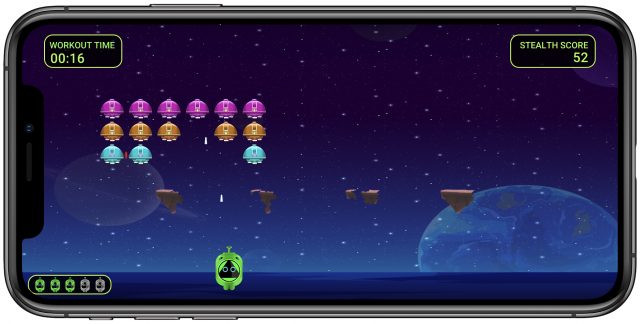
- Muscle Memory: In this takeoff on the Simon game, you have to replicate a pattern of colored flashes by tilting to select the appropriate color in the right order. It’s painfully slow, tedious, and requires more thinking than I prefer to expend while holding a plank.
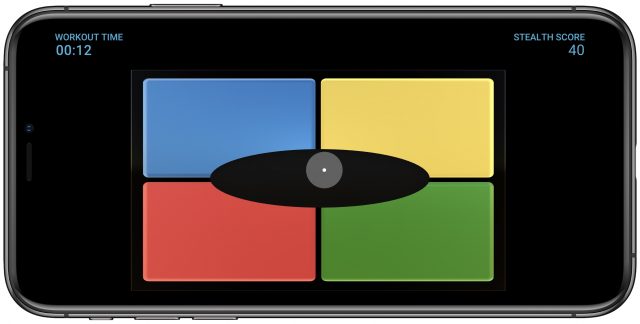
- Racquetball: Simulates a racquetball game, though it’s really just single-player Pong, bouncing a ball against the far wall and hitting it when it comes back. It’s simple but fun enough to play occasionally.
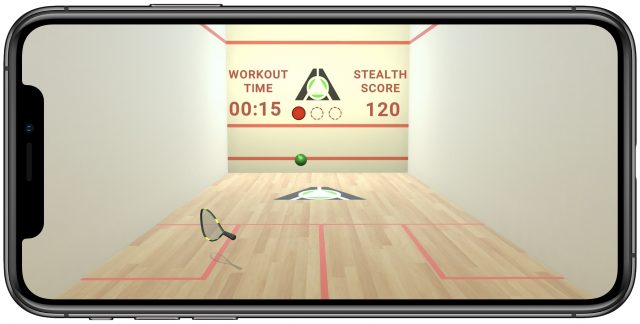
- FitMan: What can I say? It’s a Pac-Man clone. The hard part is moving precisely enough so you turn when you want. I don’t love it, but it’s better than some other games.
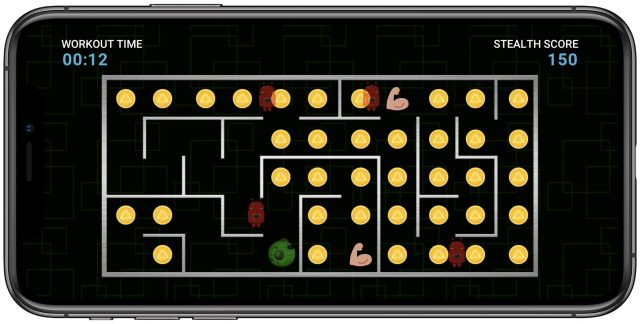
- Bubble Blast: Who would have imagined a game based on spirit levels? In this game, you have to find the exact spot where the bubbles of a horizontal and a vertical level stop in the desired position. Levels are useful tools, but way less fun than a barrel of monkeys. Or even a barrel without monkeys.
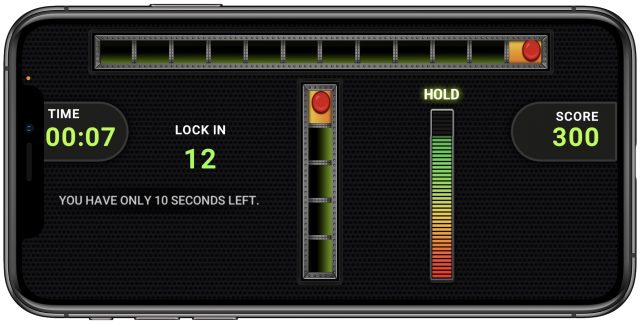
- Archery Adventure: I’m not a fan of this game because it requires extremely precise motions, which are simultaneously difficult and not fun. You have to position your bow sight over a moving target at just the moment when a countdown finishes and causes an arrow to fire.
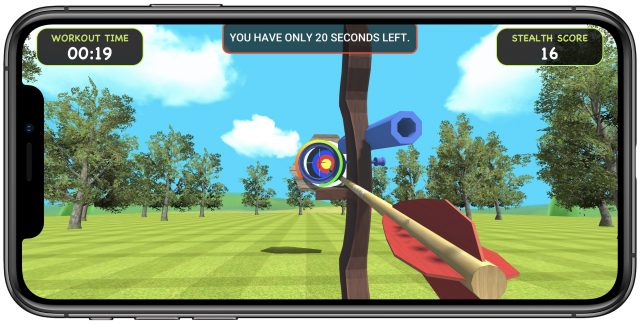
- Mini Golf Mania: This puzzle-based game isn’t a terrible idea, but it’s slow and lacks enough overall variability, and its obstacles are sometimes too difficult.
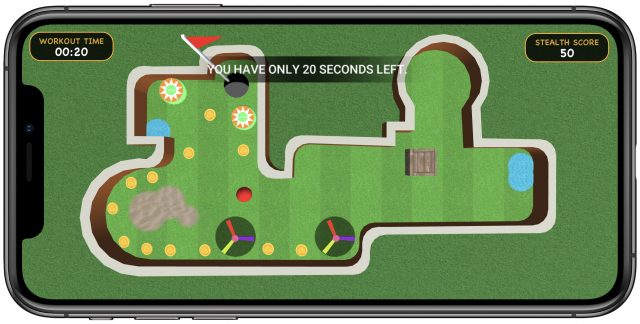
- Mountain Bike Madness: Perhaps, if you look up, you’ll see Speed Glider. The terrain is similar, and the gameplay is as well, asking you to run into coins while riding down a path and avoiding obstacles. It’s reasonably fun.
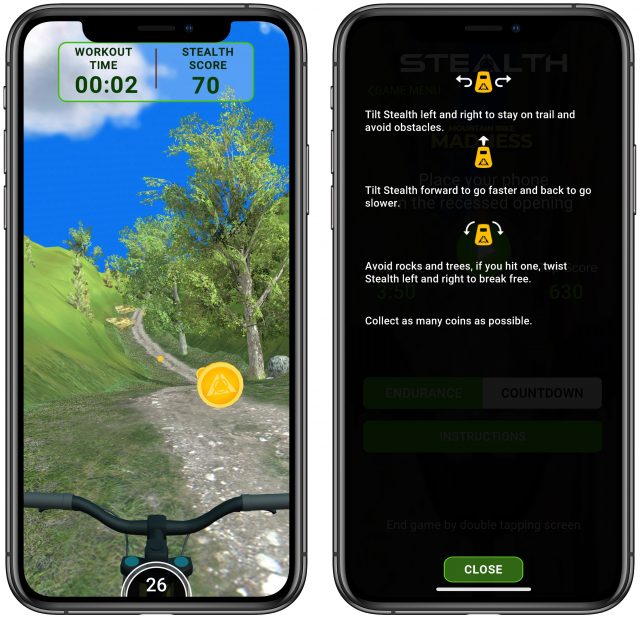
- Mighty Maze: It’s FitMan without the dots or ghosts, more or less. As with FitMan, it feels like you’re navigating through molasses, which makes it all too easy to miss turns.
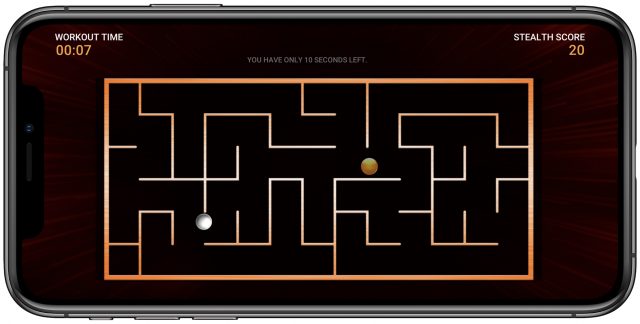
- Fun Runner: Although this game seems like it should be similar to Color Chase and Sprint Stick, it requires that you jump over obstacles in the road while collecting coins. The tilting required to jump doesn’t feel natural to me and is hard to time, so I’m continually running into the barriers and having to twist to get off. I kind of hate it.
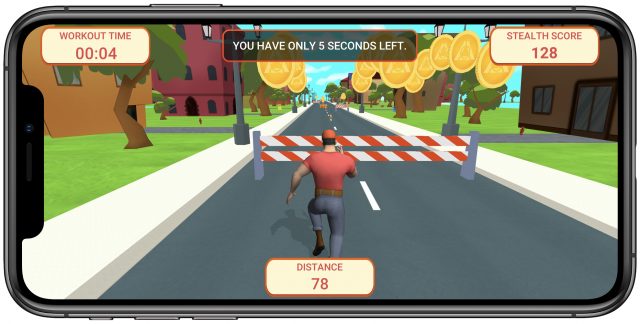
That’s a lot of games, but even for those I enjoy, I get bored if I try to play any one of them for too long. They’re just too simple. The solution to that is the Stealth Fitness app’s Gamemix option, which lets you select any number of apps that use the same orientation and specify how long you want to play each one before moving on to another random choice from your selection. My preferred mix includes Color Chase, Space Escape, and Sprint Stick. I’m not sure what my preference for the portrait games means, but they seem quicker and more fluid than the others.
For any session, whether an individual game or Gamemix, you can choose between an Endurance session, where you play until you can no longer maintain your plank, and a Countdown session, where you specify your time goal in advance. With Countdown sessions, you can set the Stealth Fitness app to increase the time by a set number of seconds every day.
You can work toward two goals in any session, time and score:
- Time, either in how long you can maintain an Endurance session or if you complete a Countdown session, feels like a more accurate measurement of what you’ve done.
- Score can vary because the game environments are generated randomly, sometimes with fewer point opportunities. I’ve had a couple of situations where I hit a new time record but didn’t come close to breaking a high score.
One nice touch: as you get close to breaking a record in either metric, the Stealth Fitness app displays a badge showing how close you are and, when you exceed either, indicating by how much you’ve beaten the previous record.
For each game, the Stealth Fitness app maintains a history of your efforts so you can see how you’re (hopefully) improving. It also displays a points leaderboard of all other Stealth users’ efforts for that game for the day, week, month, year, and overall. I find the leaderboards somewhat inscrutable because there’s no way of knowing how many sessions someone has performed in the associated time period to accumulate that many points. And, clearly, some people do it a lot—the top two spots on the Day leaderboard are held by people who devoted an hour to Stealth today. They make my 5 minutes and 30 seconds look paltry, but I typically do only one session per day. You can filter the leaderboard to show only those people who you feel are comparable.
If you’re into such things, the Stealth Fitness app also lets you create and join challenges so you can compete with friends, family, or strangers. I’m mostly intrinsically driven, so I haven’t had any extrinsic motivation to join challenges. Similarly, I’m actively repelled by the concept of participating in a Facebook group, so I haven’t explored that either.
Should You Go Stealth?
Overall, I like the Stealth Core Trainer, and it has done what it promised—increase my core strength while letting me play some simple games. As a piece of workout equipment, it’s reasonably priced. The list price is $149, but it seems to be on sale at all times for $99.
I do have two concerns, one physical, the other financial. First, although planks are easy to do, and a QuickStart section of the app provides videos showing the proper form, just knowing the right form isn’t always enough. If you let your back sag or hunch weirdly, you could hurt yourself by overdoing it on the Stealth. The only solution to that is to get someone to watch you occasionally, especially toward the end of a session, and see if you’re maintaining that straight line along your back. In fact, by having Tonya take a video of me, I discovered that what I thought was straight was actually sagging a little. I haven’t hurt myself, but I’ll work on that in the future.
Second, although $99 doesn’t seem excessive for what is essentially a large piece of durable plastic, it turns out that only four games—Galaxy Adventure, Speed Glider, Color Chase, and Space Escape—are available for free. To access all the rest, you need a $24.99 annual subscription to Stealth Premium. I don’t begrudge Stealth Body Fitness the recurring revenue, especially since it has ongoing costs and continues to release new games and enhance the app. But I do take exception to the Web page advertising the Stealth Core Trainer, which explicitly says “No subscription required!” and doesn’t even mention the Stealth Premium subscription. There’s no reason not to be transparent about the costs.
In the end, if you’re looking for an inexpensive way of increasing core strength and getting some exercise while waiting out the pandemic, the Stealth Core Trainer is a worthwhile investment, even if it does require an extra annual subscription for the bulk of the games.
Contents
- New Members
- Xebec’s Tri-Screen Attaches Extra Screens to a MacBook
- Plastic Fantastic Trainer: Get Stealth Exercise at Home
- LG 27UK850-W: An Acceptable 27-inch Display for the Mac
- Apple Publishes Device and Data Access Safety Advice
- App Store Wars: Facebook vs. Apple, Publishers vs. Apple, Apple vs. Brave

